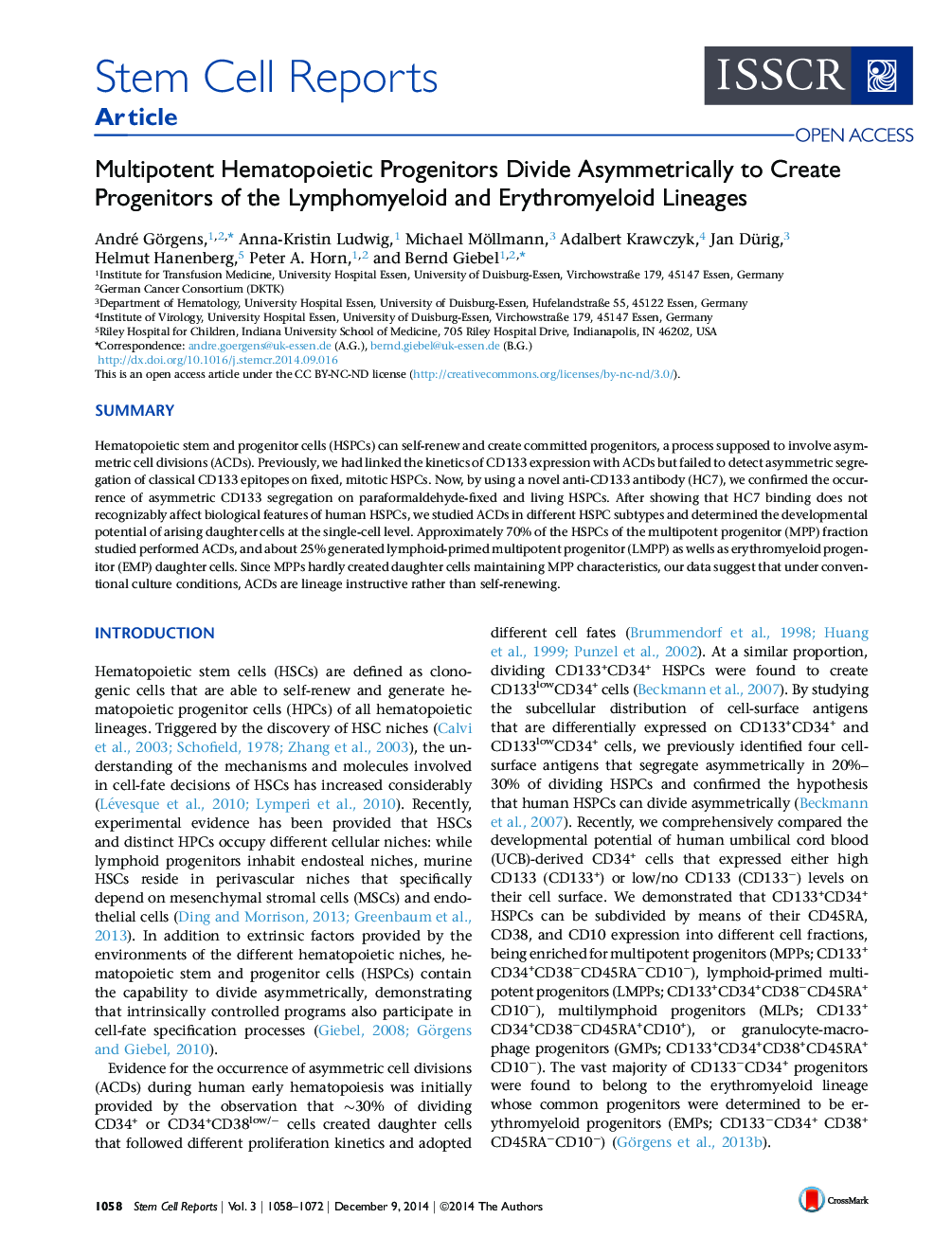| Article ID | Journal | Published Year | Pages | File Type |
|---|---|---|---|---|
| 2093684 | Stem Cell Reports | 2014 | 15 Pages |
•The HC7 anti-CD133 antibody allows analyses of ACDs on fixed human HSPCs•HC7 and AC133 anti-CD133 antibodies allow tracking of CD133 in living HSPCs•Cells of the MPP fraction divide asymmetrically to create LMPP- and EMP-like cells•ACDs of MPPs are lineage instructive rather than self-renewing
SummaryHematopoietic stem and progenitor cells (HSPCs) can self-renew and create committed progenitors, a process supposed to involve asymmetric cell divisions (ACDs). Previously, we had linked the kinetics of CD133 expression with ACDs but failed to detect asymmetric segregation of classical CD133 epitopes on fixed, mitotic HSPCs. Now, by using a novel anti-CD133 antibody (HC7), we confirmed the occurrence of asymmetric CD133 segregation on paraformaldehyde-fixed and living HSPCs. After showing that HC7 binding does not recognizably affect biological features of human HSPCs, we studied ACDs in different HSPC subtypes and determined the developmental potential of arising daughter cells at the single-cell level. Approximately 70% of the HSPCs of the multipotent progenitor (MPP) fraction studied performed ACDs, and about 25% generated lymphoid-primed multipotent progenitor (LMPP) as wells as erythromyeloid progenitor (EMP) daughter cells. Since MPPs hardly created daughter cells maintaining MPP characteristics, our data suggest that under conventional culture conditions, ACDs are lineage instructive rather than self-renewing.
Graphical AbstractFigure optionsDownload full-size imageDownload as PowerPoint slide
